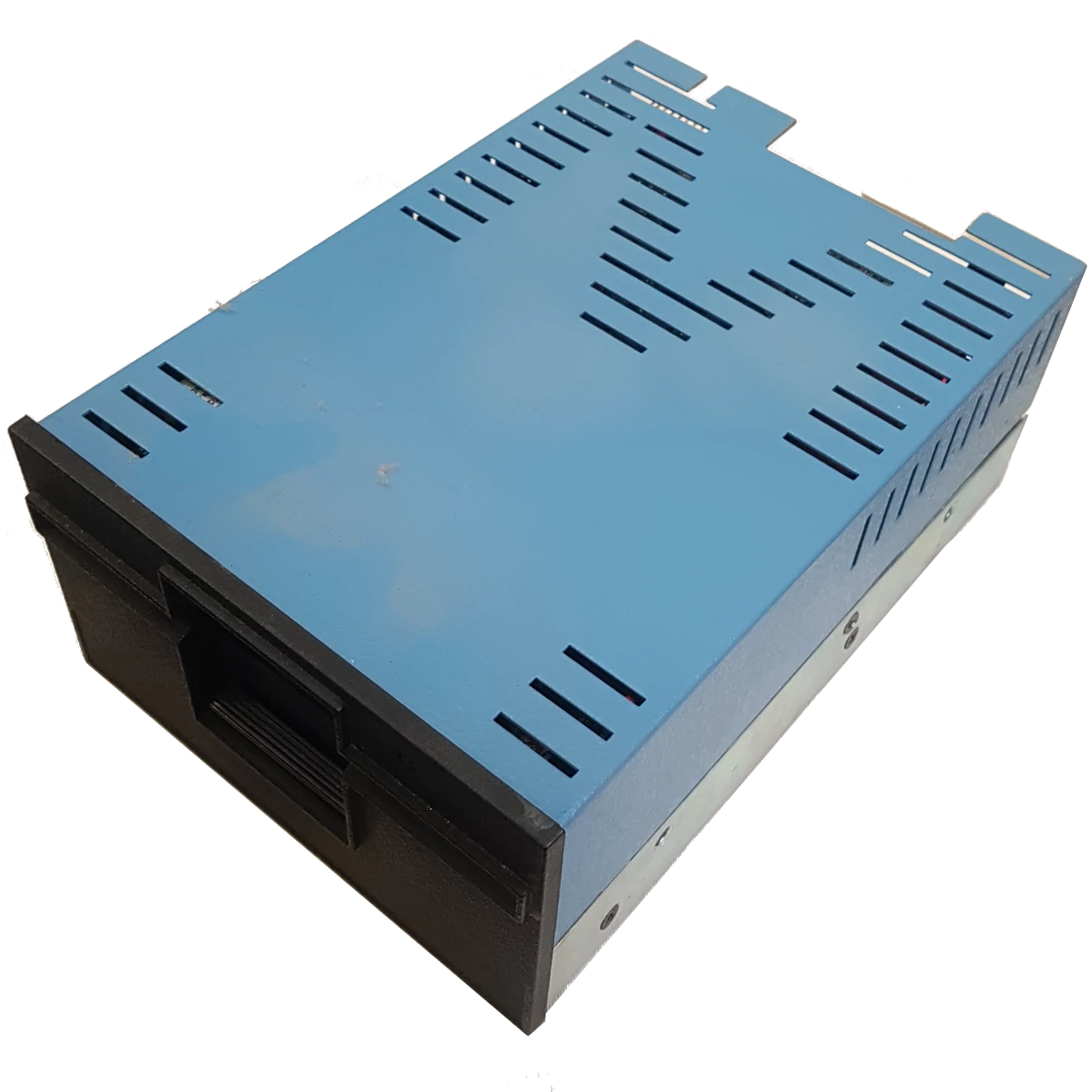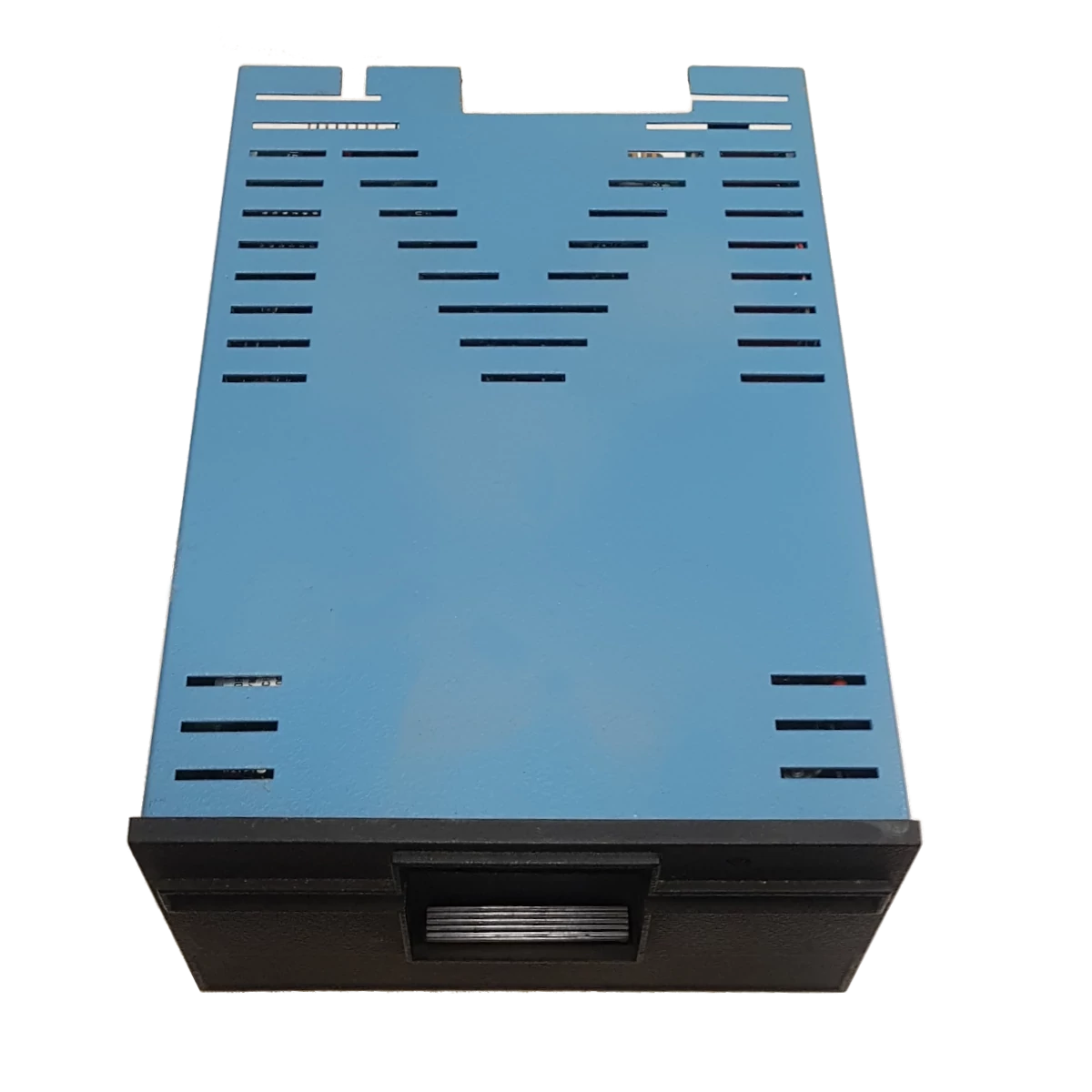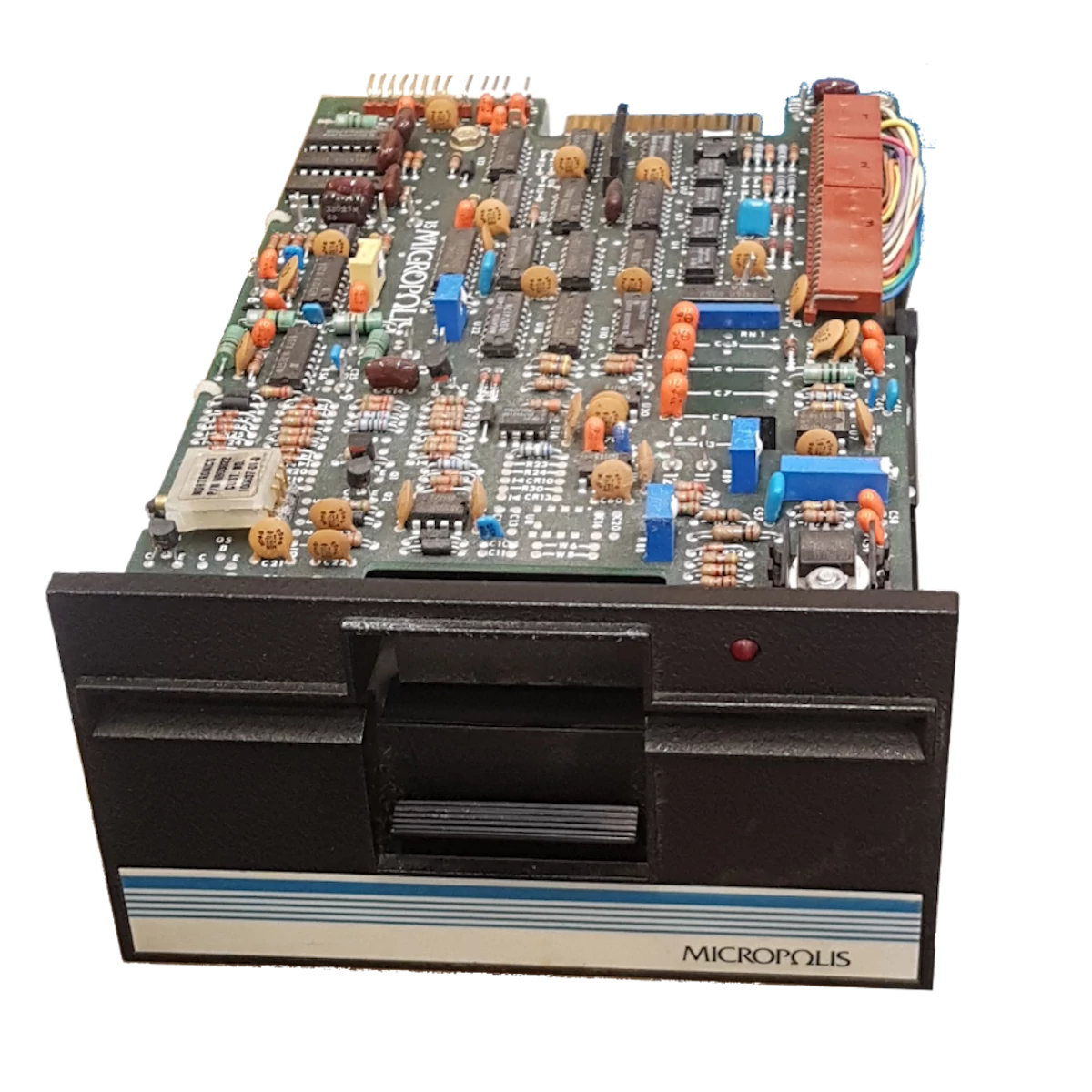Micropolis 1015/1016-Series
DRIVE SERIES SPECIFICATIONS
FLEXIBLE DISK DRIVE SPECIFICATIONS - 1015 SERIES
Overview
The Micropolis 1015/1016 series of OEM floppy disk drives consists mainly of drive mechanics assemblies meant to be installed in an OEM drive enclosure. But for end-users and smaller OEMs, Micropolis also offered a ready-to-use drive+enclosure model with the Micropolis 1055, a so called "subsystem".1006 models
The earliest entry in the drive family is the single-sided 1006, which was available as single (roman numeral II) and double sided variant (roman numeral IV) in 1981. (Note that on drive model stickers, roman numerals like "II" are usually written as arabic "2".) It has a relatively open black frame (assembled on a silver metal base), where the disk "clamp mechanism" with its wedge shape can be easily recognized. An "LMS" stepper motor manufactured by MOLON motor & coil co. is used and placed at the far end of the assembly, next to the belt drive motor located on the left (seen top down) backside. From the outside, you can identify these drives by the "activity"-LED on the upper-right of the front-bezel.Video of Model 1006-IV
1015/1016 models
A second iteration are drives labeled as 1015 and 1016 which came in model variants identified by roman numerals I, II, V and VI, each with a different combination of track stepping, head number and data encoding type (MFM / GCR).Later models and especially the 77-track drive variants (subsequently the family as a whole) have been marketed as the MegaFloppy.



Following the success of the 100085 controller card, the "MegaFloppy" family was Micropolis' first iteration of actual drives and drive-subsystems in 1977/1978. It was followed by the 1040/1050 subsystem series around 1980 which used the 1015 drive series in "MacroFloppy" (35 tracks) and "MetaFloppy" (77 tracks) variants. The subsystem model 1043-II uses a 1015-II drive. In a 1043-II setup, drive mechanics were sometimes labeled "1015-II F" for "master floppy drive" and "1015-II FS" for "floppy slave". Model 1015-II FS sometimes is erroneously listed as "Micropolis 1015F-5". On the outer package, one detail is that later models had the heat dissipation vents on the metal sleeve arranged to form an "M" for "Micropolis".
MOD I drives have a track density of 48 tracks per inch (TPI) with a total of 35 tracks. MOD II drives have a track density of 100TPI with 77 total tracks. The difference in track density and total tracks results from using a different lead screw in the positioner, a different read/write/erase head, and different components and adjustments on the PCBA.
In 1980, when the market for "quad density" 5.25-inch floppy disks moved towards the 96TPI standard instead of the Micropolis proposed 100TPI, the 1015 series forked a line of 96TPI drives. Models 1015-5 and 1015-6 (stylized with roman numerals as 1015-V and 1015-VI) are FM/MFM encoding drives with one or two read/write heads and Micropolis models 1016-5 and 1016-6 are GCR encoding drives with one or two read/write heads respectively.
Disk media
Floppy disk media used to be manufactured as hard-sectored and soft-sectored. Read more about hard-sector and soft-sector media in the Knowledge base. Within the drive's mechanics a photosensor circuit is used to detect the occurrence of the diskette's index mark (and sector marks, if present ). But the drive's mechanics and electronics are agnostic towards these marks as the interpretation is delegated to the host controller. In operation, the drive's sector/index photosensor circuit will generate a signal for each hole passing the disk's window. The host controller must be able to differentiate the index hole from the sector holes and incorporate these signals into its logics.Disk Latch Mechanism
Floppy drives from this era, drives you would normally find in a Tandy TRS-80/4 or IBM 5150, those drives had a single latch that pressed down on the drive after insertion. Micropolis 1015/1016-series drives on the contrary, used an advanced "two step locking"-mechanism for disk insertion ("disk-insertion interlock"). While inserting the disk you would press the disk so far in until you hear a snapping sound. After this, the disk is held fixed by the drive in the proper position for closing the drive. The second step then is to press the front drive latch down to press the disk on the motor spindle. This two-way insertion prevents user error. With a simpler one-way insert-and-close procedure, the disk center ring might get damaged due to the disk not being properly placed on the center of the motor spindle.Later models introduced a microswitch on the drive-close latch that triggered the motor to spin up for a few turns while the user fully closed the latch, fixing the disk center ring on the motor spindle. The idea behind this was to optimise the centering of the disk on the motor spindle before it was pressed fixed.
Also, some drives were able to lower the read/write-head to the disk surface via solenoid action, triggered via software.
Outlook: 1106 successor models
Years later, a revised and improved update of these drives was released as model 1106. These updated drives labeled 1106 II and 1106 IV were also nicknamed "Micropolis Safari drives". In comparison with earlier models 1006 and 1016, model 1106 drives are assembled on an aluminum die cast chassis, which results in improved rigidity of the drive. From the outside, you can identify these drives by the "activity"-LED on the lower-left of the front-bezel. Of both versions 1006 and 1016, Commodore International was an important customer, installing these drives OEM in Commodore 8050 and 8250 floppy disk subsystems.Maintenance
In addition to all notes in the operation and maintenance handbook, for legacy computer enthusiasts it might be noted that operators should have an eye on stability of motor speed, head pressure pads where felt may have become hard or off, and defective microswitches on the closing mechanism. Also, azimuth head alignment might be an issue.Downloads
- Maintenance Manual December 1979